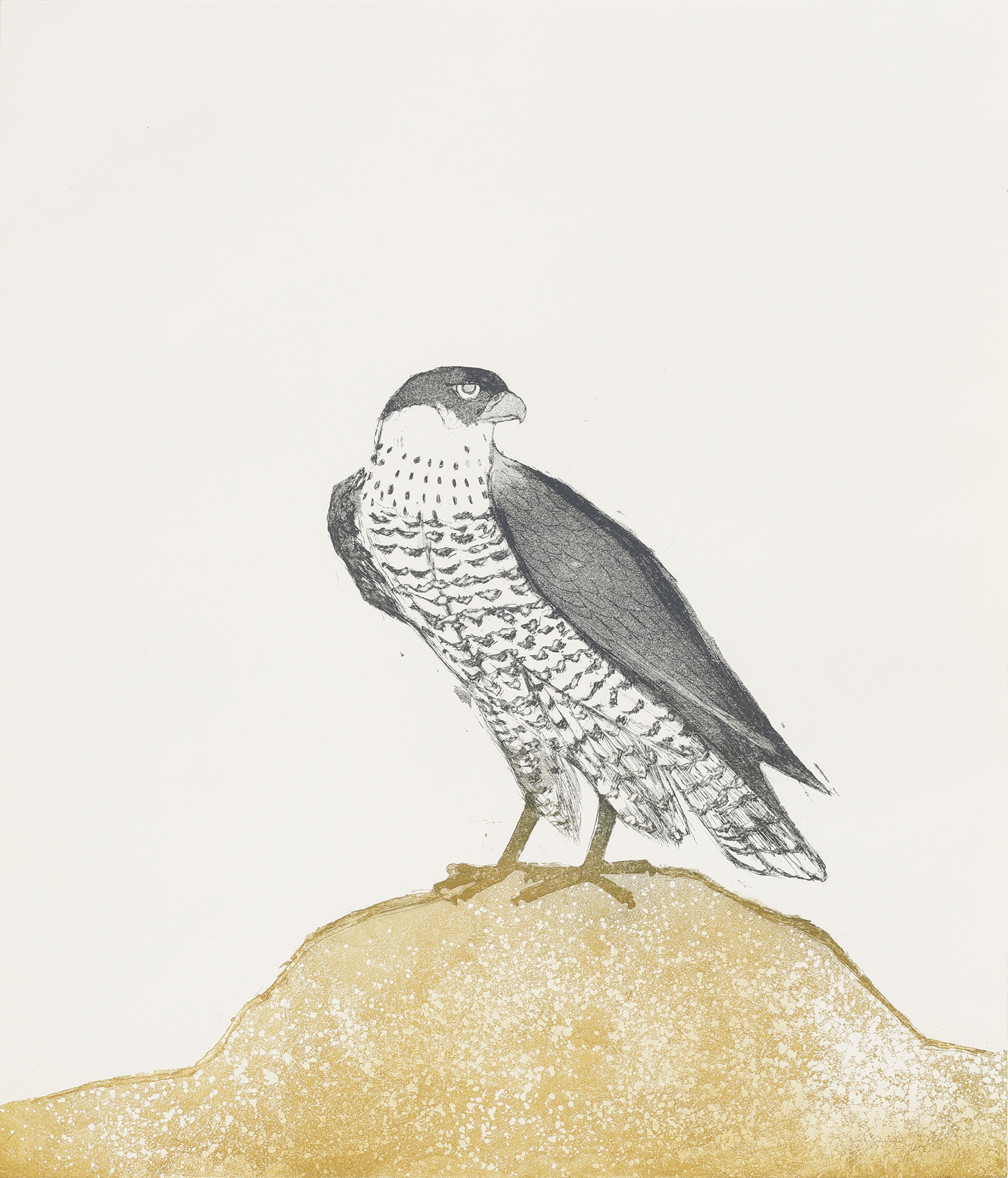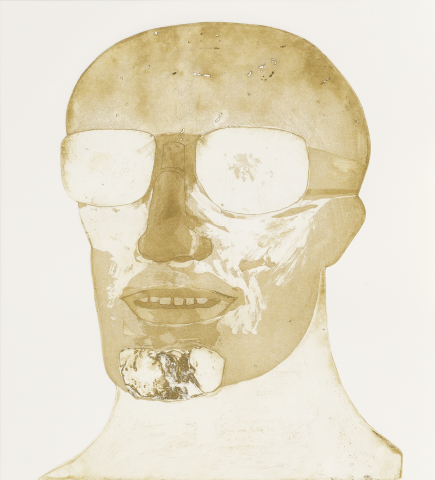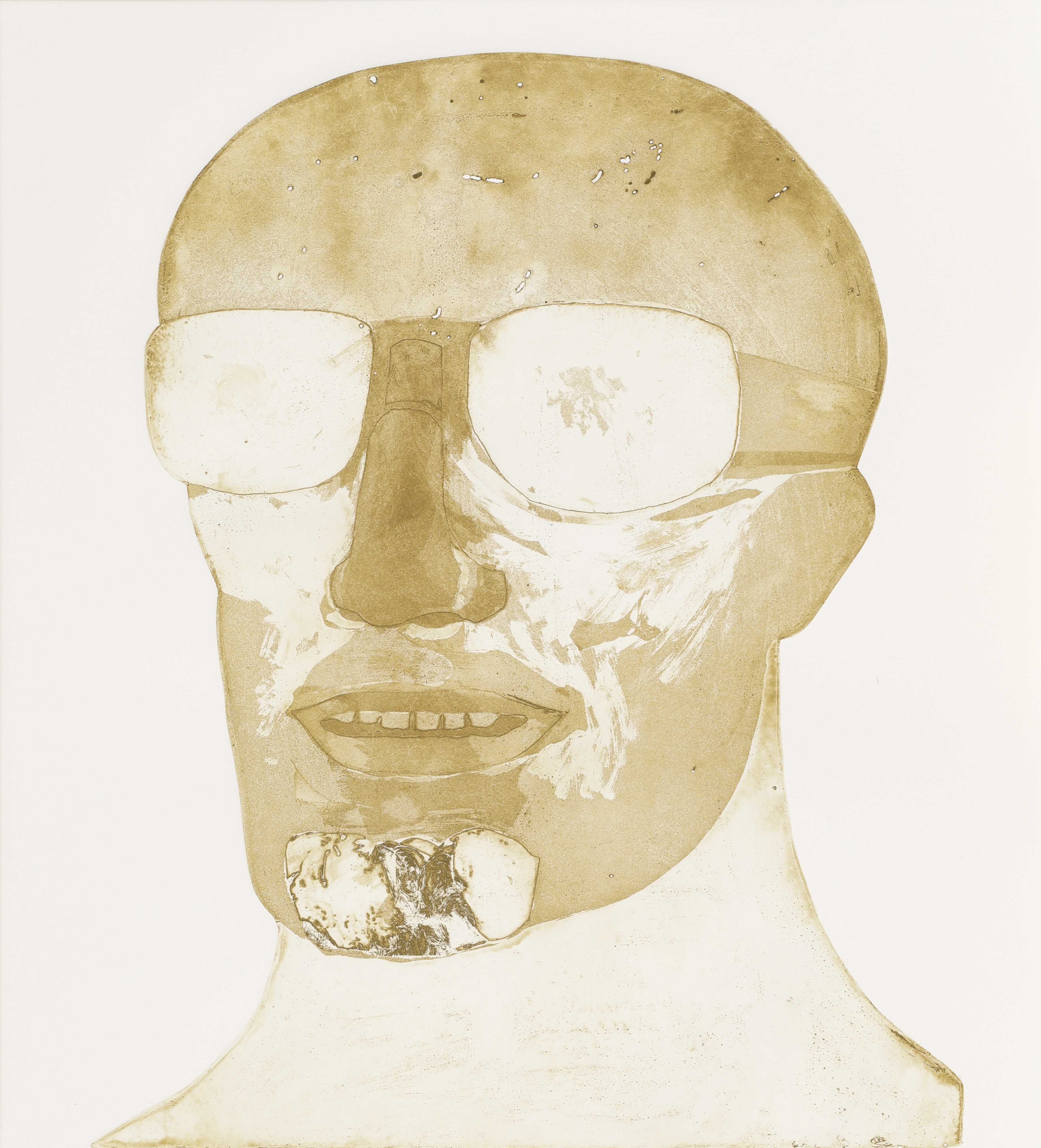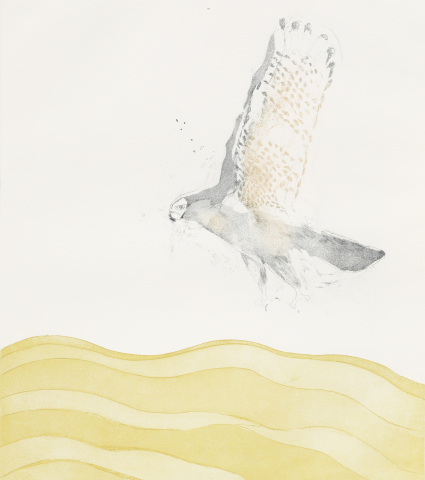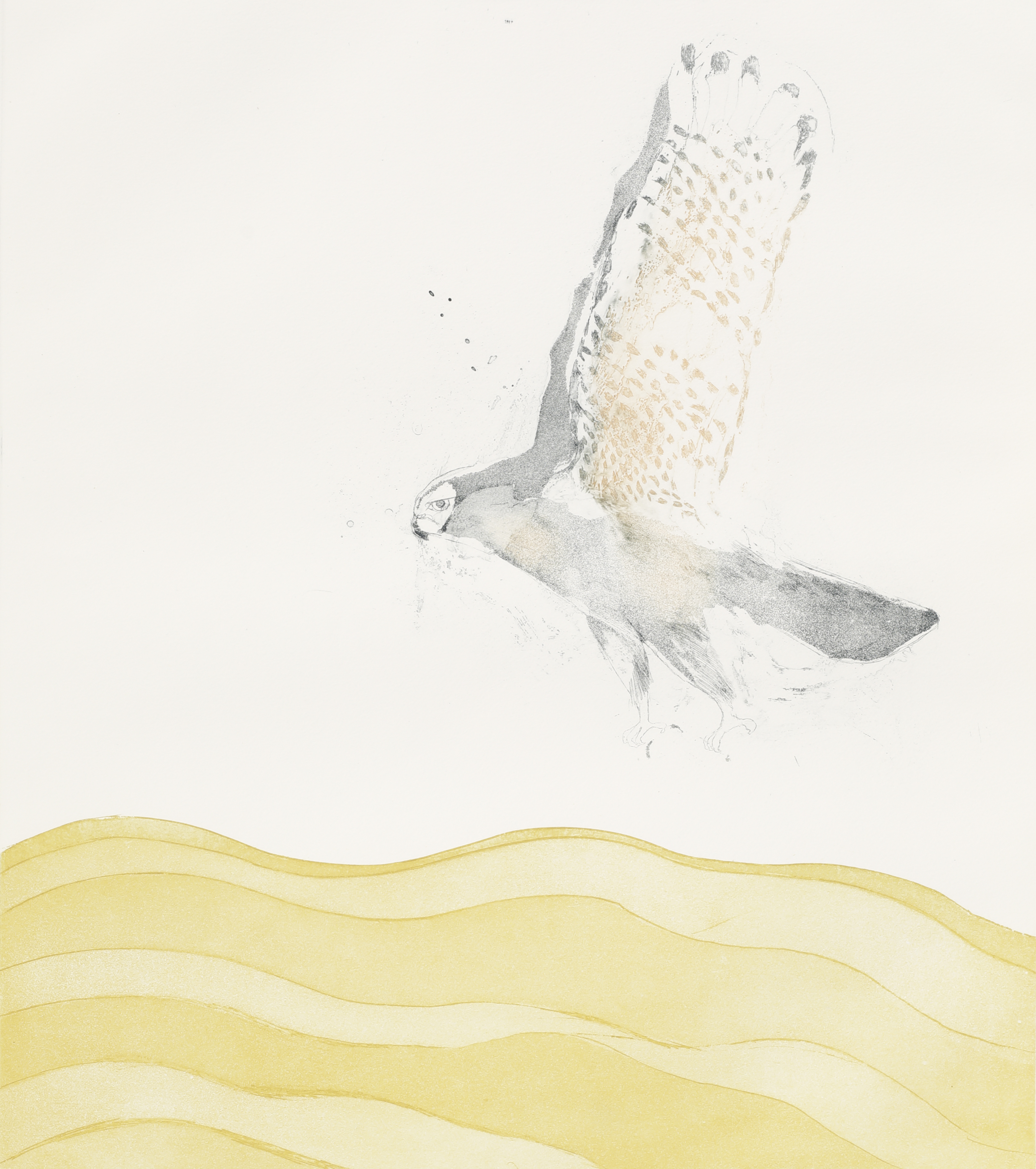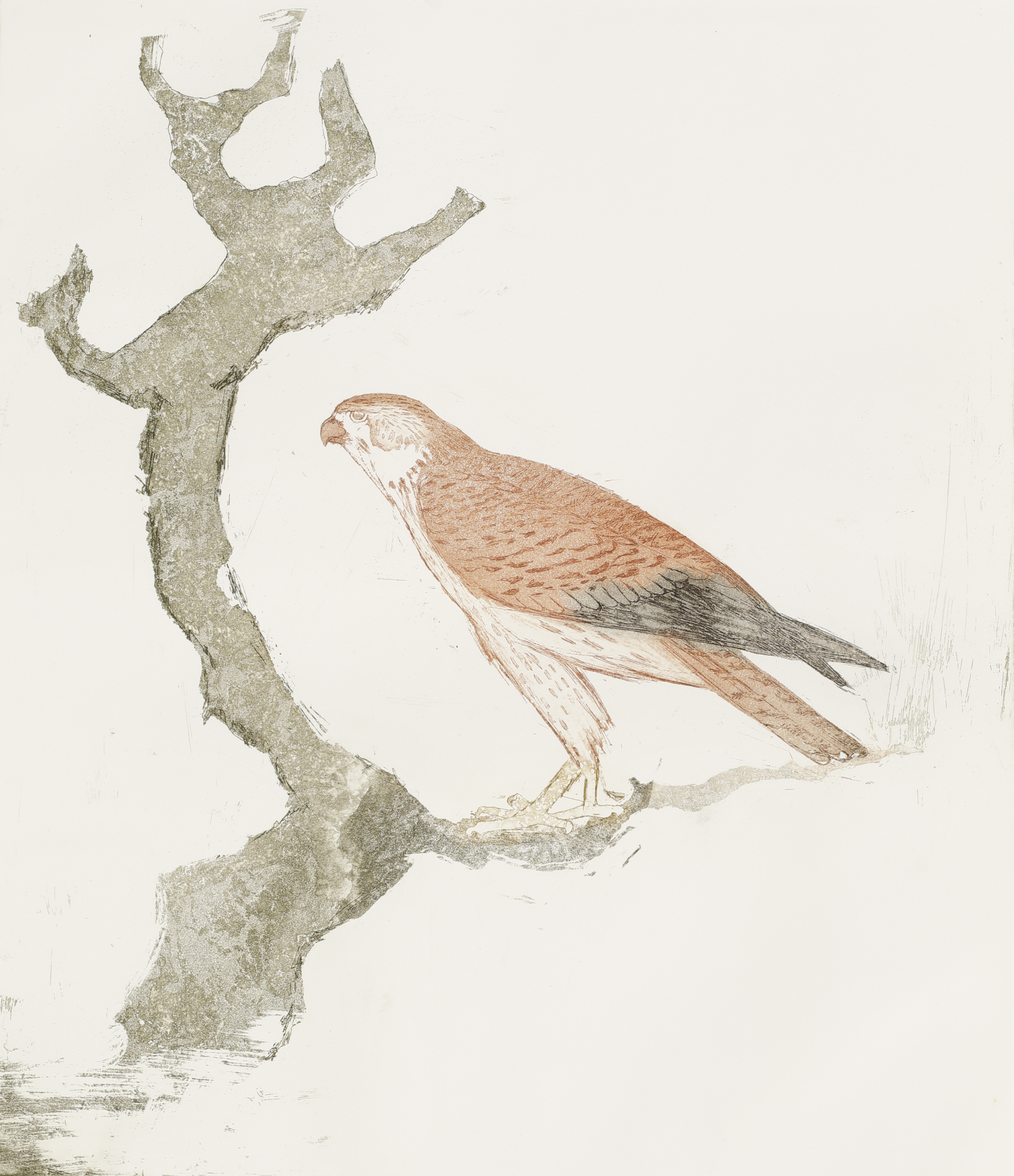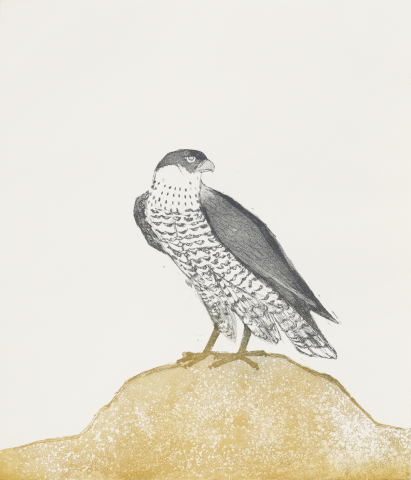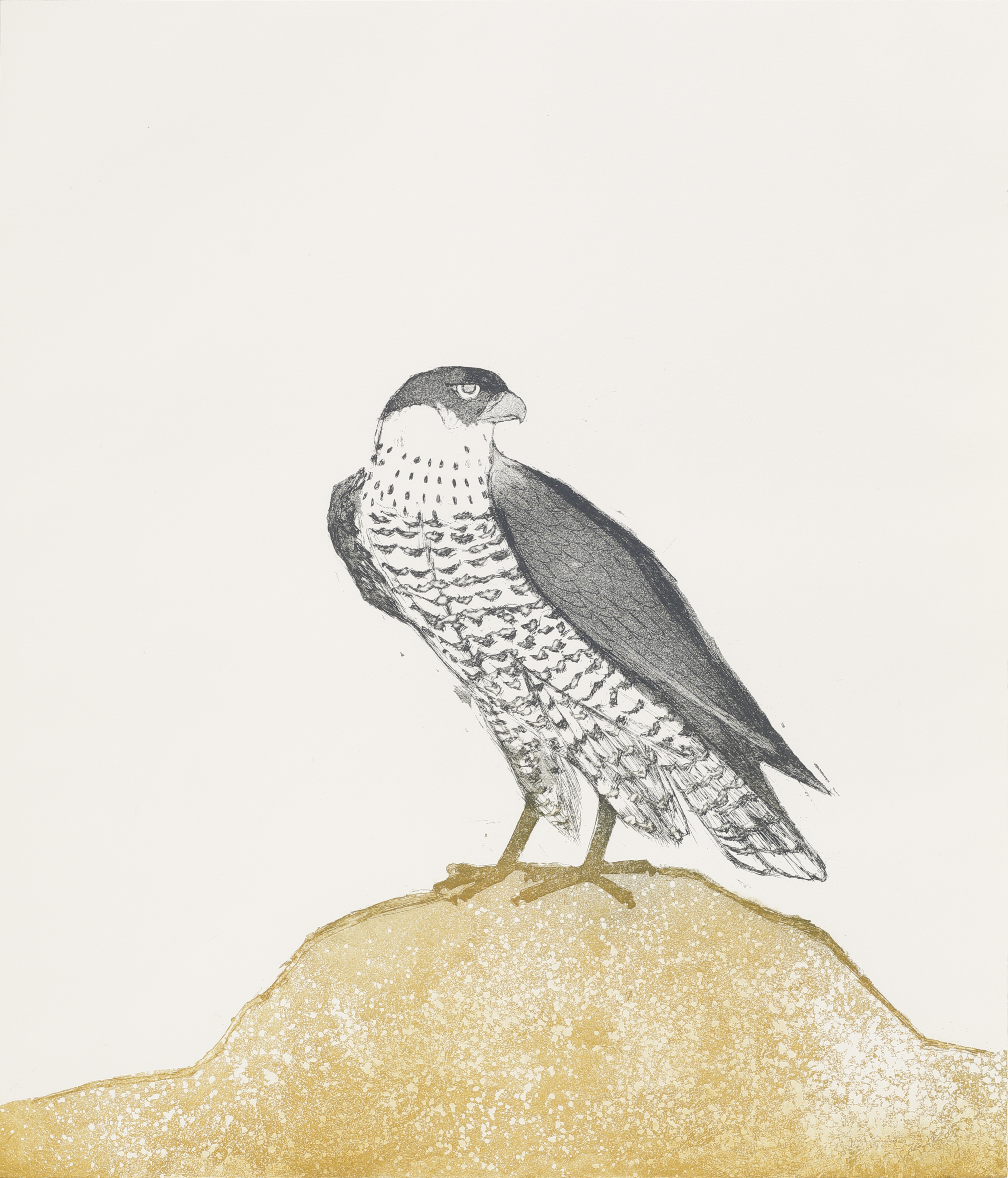Prints from the LUAG permanent collection
“I was brought up in the War, and I think I used birds as a vehicle for all sorts of aggressive forms… They became like bits of shrapnel and flying things, you know, with very sharp beaks” — Elisabeth Frink
Dame Elisabeth Frink (1930-1993) was not quite nine years old when World War II shattered the calm of her English countryside home. Raised near a military airfield in Suffolk, she experienced horses and birds of prey side-by-side with crashing airplanes and machine gun fire. Frink was part of a generation of sculptors drawn to pitted metal surfaces and spiky, alienated forms that became signifiers of post-war anxiety. The critic Herbert Read dubbed them “The Geometry of Fear” for their powerful apocalyptic effects. From her earliest days at the Chelsea School of Art, London, Frink also made prints like the ones in this exhibition. Starting in the mid-1960s, her tone begins to shift away from the chaos of her earlier work. Using a more naturalistic hand, Frink expresses her deepening concern for the relationship between human beings and the natural world.
Frink is best known as a sculptor of outdoor bronzes. Two of her monumental commissions include Eagle, installed at the JFK memorial in Dallas, Texas; and Risen Christ, for Liverpool Cathedral.

